What to Use to Seal Wood Before Painting
For painting wood furniture, you’ll need more than just a paintbrush and some paint. Aside from prep work like sanding and cleaning, you’ll also need to seal the wood. But do you know what to use to seal wood before painting? What is the right wood sealer for the job?
Primers and sealers are must haves among the many furniture painting tools and supplies, and you’ll need to know which one to get to avoid a paint disaster and save yourself time, effort, and money. We’ll break down which sealers we recommend for your wood furniture.
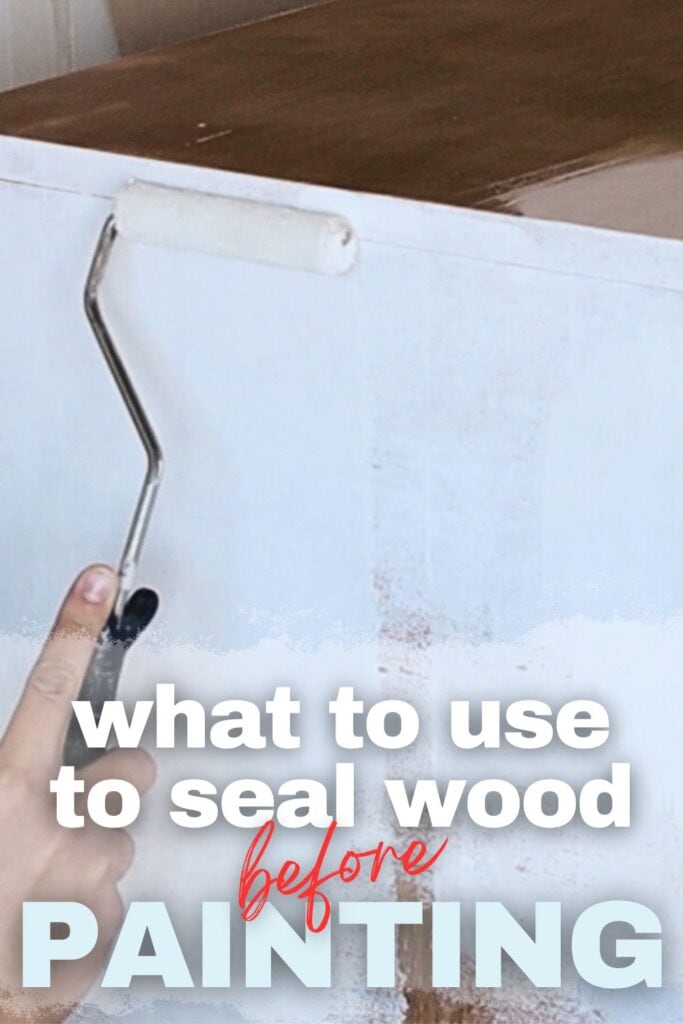
But first, let’s talk about why sealing wood is important. For starters, priming wood for painting helps the paint stick better to the surface. You want your hard work to last, right? Sealing your wood furniture guarantees that your paint job will have better adhesion and won’t chip or peel easily.
Additionally, sealing wood before painting gives you better coverage and a smoother finish. No one wants to spend hours painting only to end up with an uneven or streaky result. Sealing the wood first creates a blank canvas for your paint to go on evenly and cover the entire surface.
This step also helps to block stains from coming through your paint. Stains can come from many sources, such as water damage or the wood itself. By sealing the wood, you create a barrier that prevents any stains from seeping through and ruining your paint job.
Lastly, sealing wood can save you time and money in the long run. By creating a smooth surface for your paint to adhere to, you’ll need fewer coats of paint. This means using less paint overall and avoiding the need for touch-ups later on. With all these benefits, why would you risk it and skip priming?
Why is My White Paint Turning Pink?
If you’ve ever painted a piece of furniture white and found that it turned pink over time, you might want to know what’s really going on. The culprit is wood tannins, which are natural substances found in the grains of wood. This is especially common in softwoods like redwoods or cedar.
When these tannins come in contact with paint without proper sealing, they can bleed through and cause discoloration. And by proper sealing, we mean using the primers that best block stains.
So if you don’t seal the wood before proceeding to paint, you may start to see pink, yellow, or brown stains on your once white furniture. Read this post about why is yellow coming through white paint to learn more about the reasons behind this common problem and how to prevent or fix those stains.
Primers for Sealing Wood Before Painting
So to avoid these tannin stains and bleedthrough in the first place, look through our list of recommended primers for sealing wood before painting. These are oil or shellac based products that provide the best barrier against those pesky tannins, so your paint stays true to its color and maintains its pro finish.
As an Amazon Associate, I earn from qualifying purchases. I also may earn from other qualifying purchases with other companies or get free product to review and use. All opinions are my own.
BIN Shellac Primer
The first product we recommend is BIN Shellac Primer. The shellac version is what you need if you want to target wood tannins and stains. It also has excellent adhesion for both interior and exterior surfaces, especially when using latex or oil based paints.
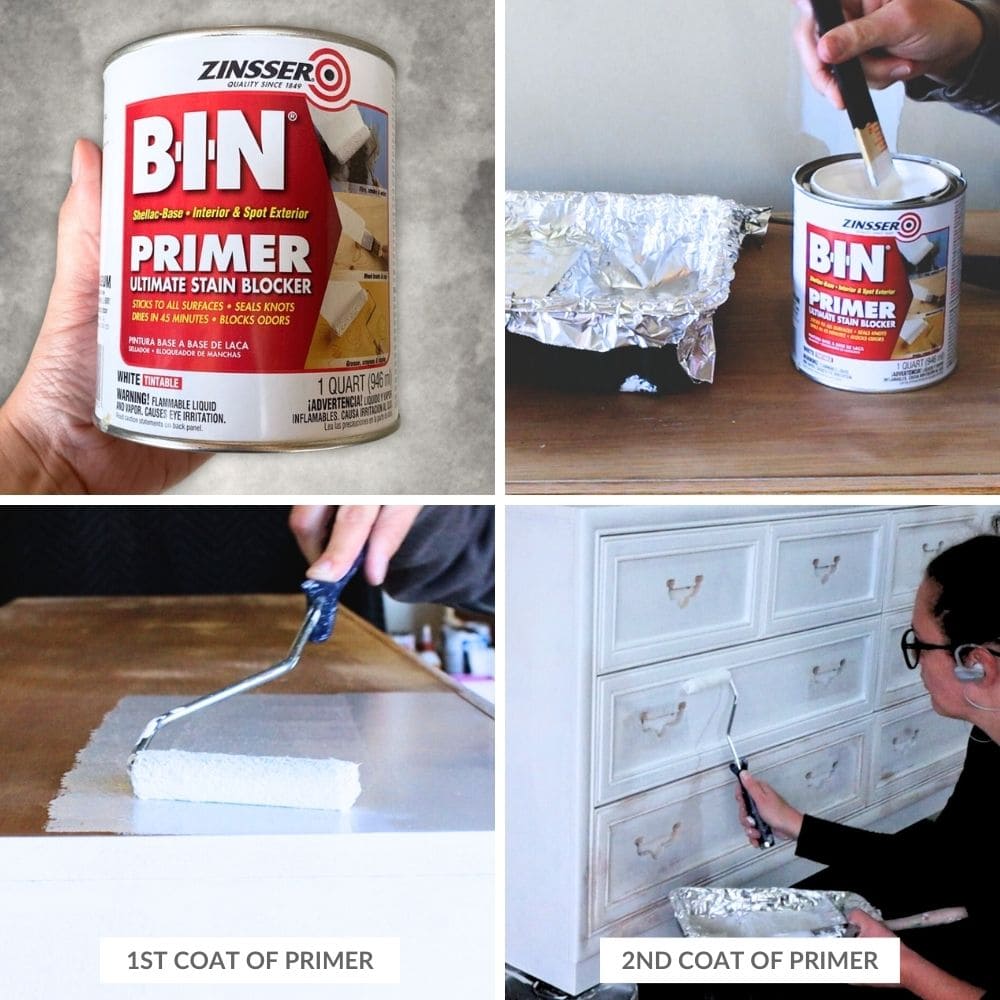
It rolls onto wood furniture with a roller pretty nicely, though there’s also a spray can version if you prefer spraying. A cheap paint brush would also be handy for small, tight areas. And we love that the BIN Shellac Primer works quickly with its fast drying formula, plus it sands easily after drying, making it easier to fix any runs or drips.
But this shellac primer does come with some fumes. You’ll want to use it in a well ventilated area and wear a respirator to protect yourself. If not, the smell can be quite strong and overwhelming, especially if you’re working on a larger project. So make sure to take proper precautions while using this primer.
Pros
- Excellent at blocking wood tannins and stains
- Works on both interior and exterior surfaces
- Fast drying formula
- Sands easily after drying to fix any imperfections
Cons
- Strong fumes, use proper ventilation and protection
Clear Shellac in Spray Can
Clear shellac in a spray can is a convenient and efficient way to seal your wood for painting. Not only does it provide great coverage against tannin stains, but it also protects against other types of stains such as water and smoke damage. You can re-coat in just one hour, making this a quick and easy step in your painting process.
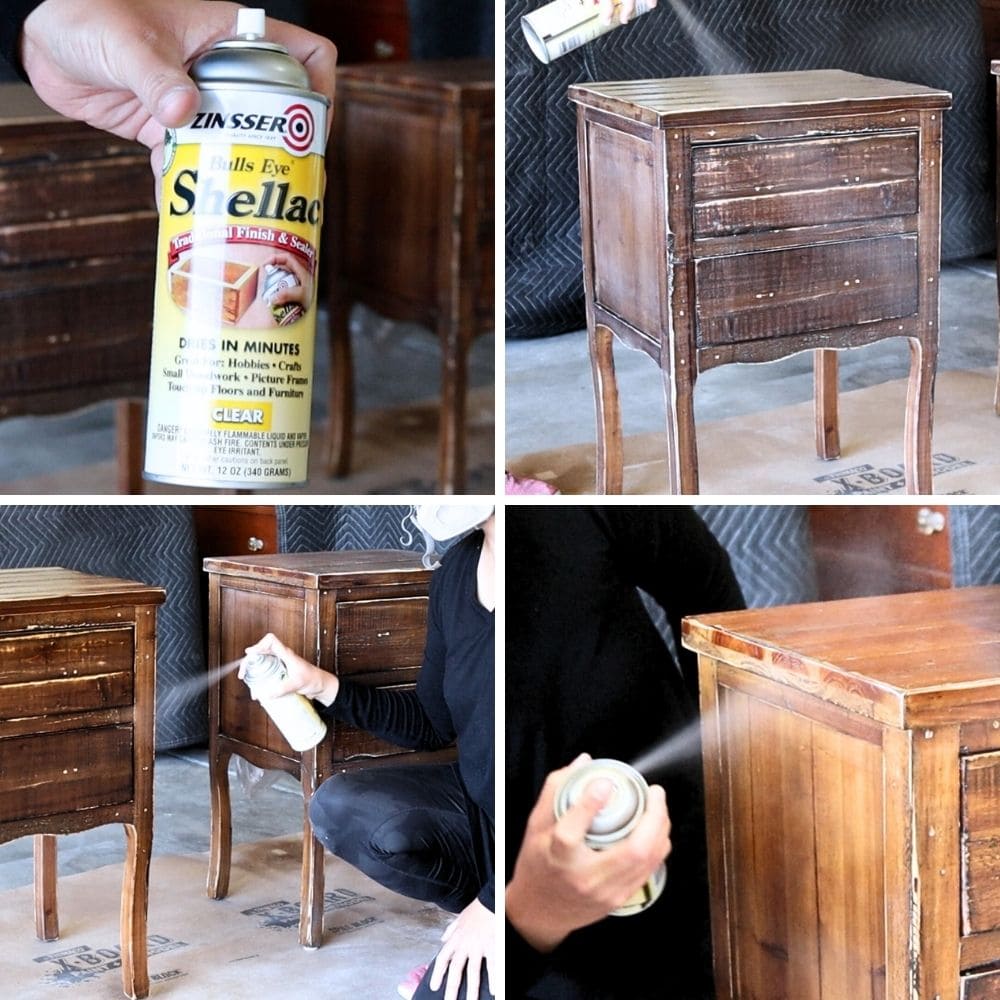
It is similar to the BIN shellac primer though because it also comes with a strong odor. Again, you have to work with it in a well ventilated area and wear a respirator for protection. However, the convenience of spraying makes it worth it, especially if you have a large or detailed project.
Pros
- Easy and convenient to use with spray application
- Effective at blocking tannin stains, water damage, and smoke damage
- Quick drying time
Cons
- Strong odor and fumes, proper ventilation, and protection are necessary
- Watch out for overspray
- May not be cost effective for larger projects
Zinsser 123 Primer in Spray Can
Another best spray primer for wood is the Zinsser 123 Primer. Get the spray can because it’s oil based and has better stain blocking and adhering ability. The quart in the non spray version is waterbased and is not as effective with bleedthrough.
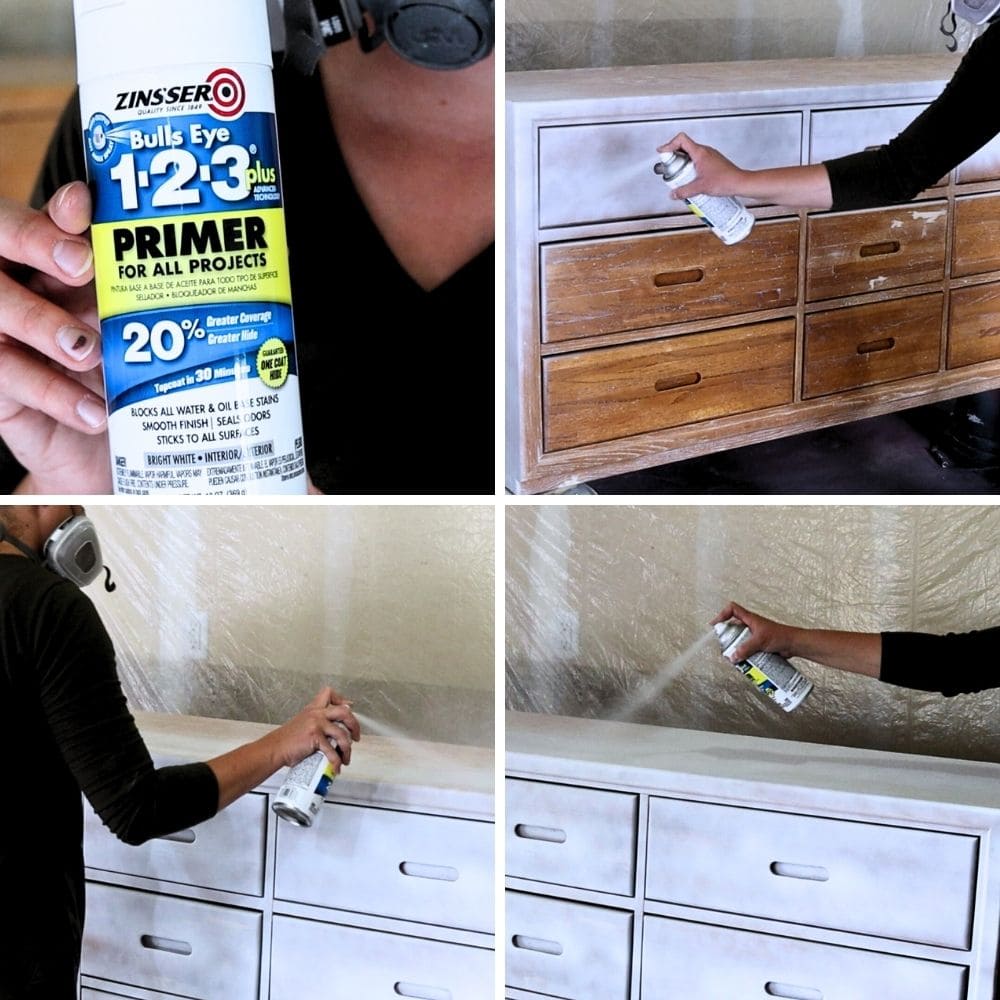
This primer has an impressive 20% greater coverage than other sprays, making it more cost effective and efficient. You get more bang for your buck and don’t need to buy as many cans for your project. Plus, it dries super quickly in just 30 minutes, letting you get to the next coat or painting part faster. However, it might not dry quickly enough for sanding without gumming up the sandpaper.
The Zinsser 123 also has a high output spray and an any angle comfort tip so application is easier and more comfortable. This makes it great for when you’re working with a larger piece of furniture or a hard to reach area. And it’s suitable for a variety of surfaces, not just wood, so you can use it for all your painting needs.
But just like the other oil based primers, the strong odor comes with the territory. You can opt to use it outdoors or indoors but make sure you are in a well ventilated area if using it indoors.
Pros
- Oil based version for better stain blocking and adhesion
- High output spray and any angle comfort tip for easier application
- Quick drying time of just 30 minutes
- Suitable for a variety of surfaces, not just wood
Cons
- Strong odor and fumes
- May not dry quick enough for sanding without clogging sandpaper
Kilz Primer
Last but not least is the Kilz Primer in its striking red can. It’s another quality oil based primer that helps with bleeds and stains on wood. You do need to give it some extra time to dry completely before painting over it.
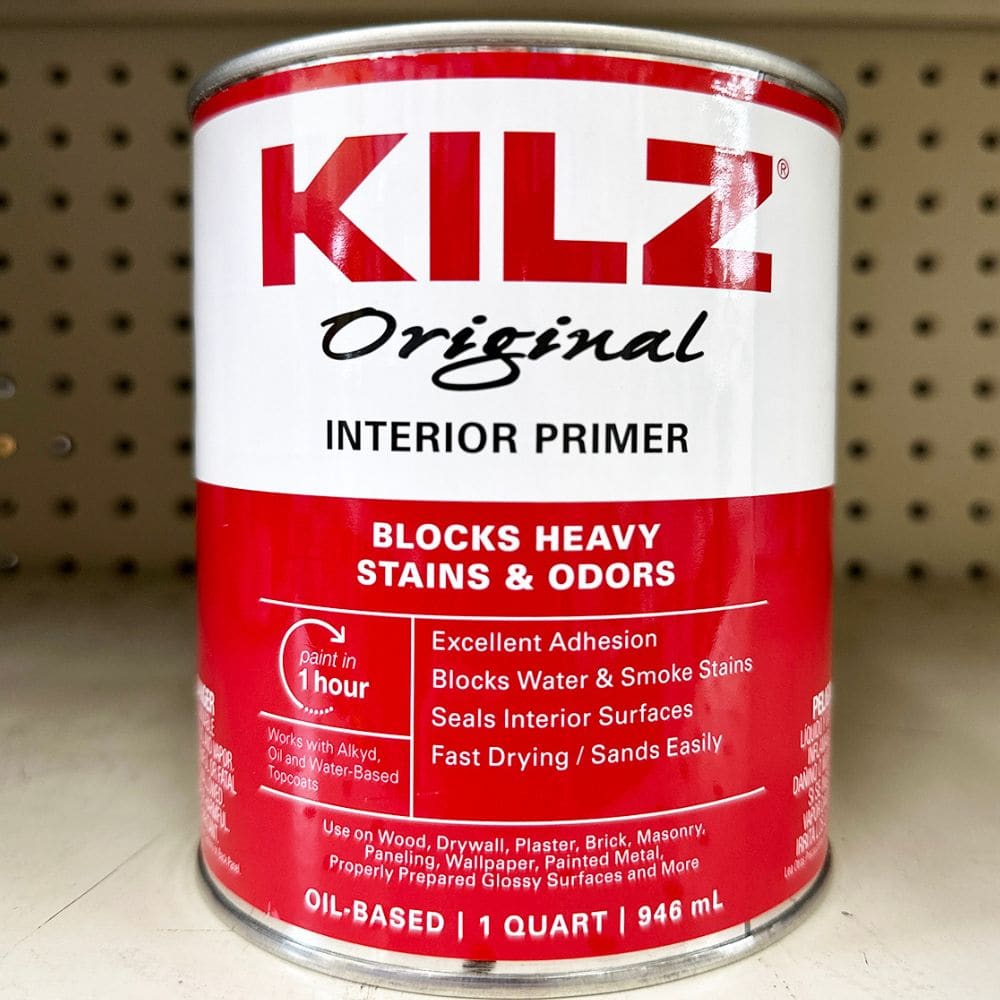
When it comes to application, you have options – you can use a paint brush, roller, or sprayer. This makes it versatile depending on your preference or the project at hand. We recommend these best paint brushes for painting furniture, best rollers for painting furniture, and best HVLP paint sprayers for furniture, so check them out!
And again with the oil based formula, you’ll have to work around the strong fumes by using proper ventilation and wearing a respirator. If you decide to use a paint sprayer to apply Kilz Primer, it’s even better if you work outside. And for cleanup, mineral spirits will do the trick for your paint sprayer.
Pros
- Good at blocking wood tannins and stains
- Versatile application with options for brush, roller, or sprayer
Cons
- Longer drying time, may need extra time before painting over it
- Strong fumes
- Cleanup can be tricky with a paint sprayer, will need mineral spirits.
How to Seal Wood Before Painting
When you’ve chosen what to use to seal wood before painting, you’re ready to start! But before sealing, you must prep furniture for painting first. That includes cleaning and sanding the surface.
Clean your furniture with a degreasing cleaner – wipe it off to rid of all the grime, oil, or dirt. Sand lightly to smooth out rough areas or remove any glossy finish. Then vacuum and wipe down the entire surface with a clean tack cloth to pick up all the dust.
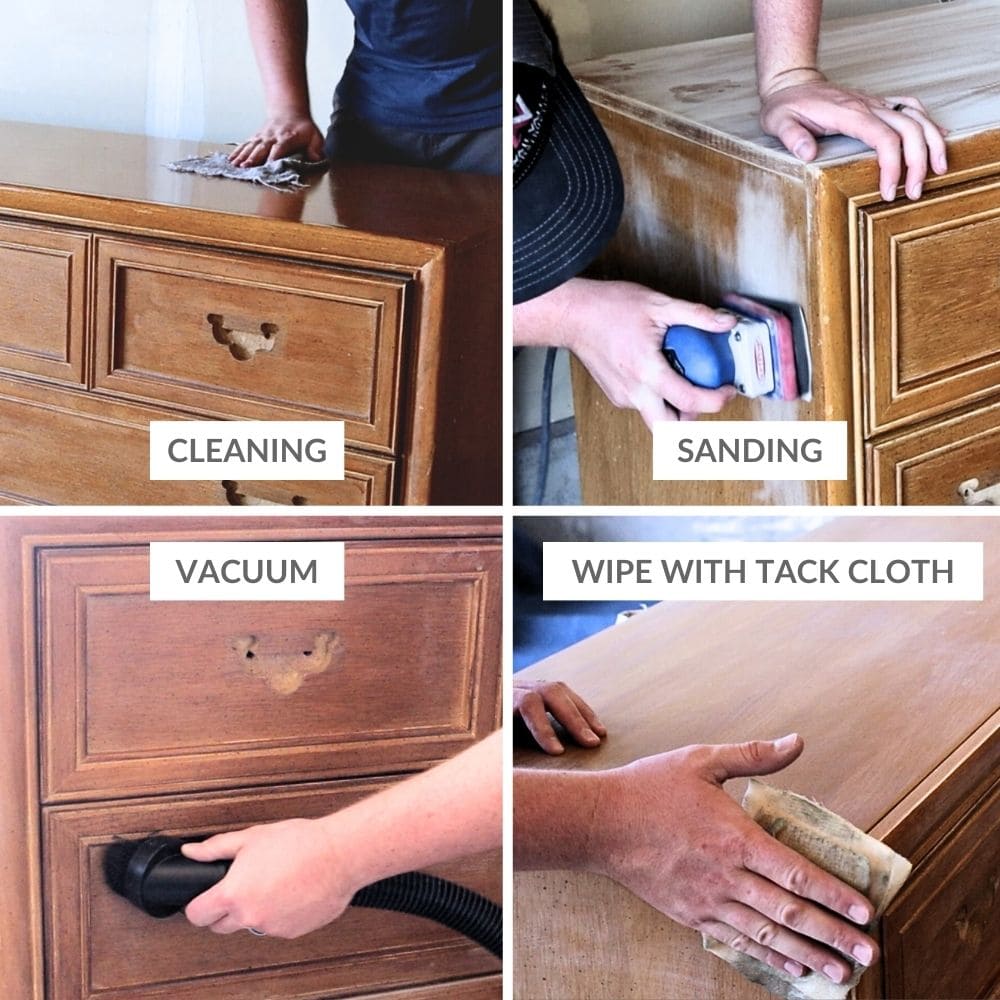
After cleaning furniture and sanding for paint prep, it’s time to seal your wood with your chosen sealer! Apply at least 2 coats for optimal coverage and the best results. Make sure to let the primer dry for 8 hours or more for maximum stain blocking before painting over it.
Remember to work in a space with good ventilation and wear proper protection while handling these oil based products. And don’t forget to use the right tools for the job, whether it’s a brush, roller, sprayer, or the spray can version if available.
If you haven’t been sure about what to use to seal your wood furniture before painting, hopefully this guide has helped you narrow down your options. And now you’re ready to start transforming your furniture into a beautiful painted masterpiece!
More painting Furniture Tips
Follow us on YouTube to get more tips for painting furniture.
Or share your project with us on our Facebook Group and be part of our community. See you there!
